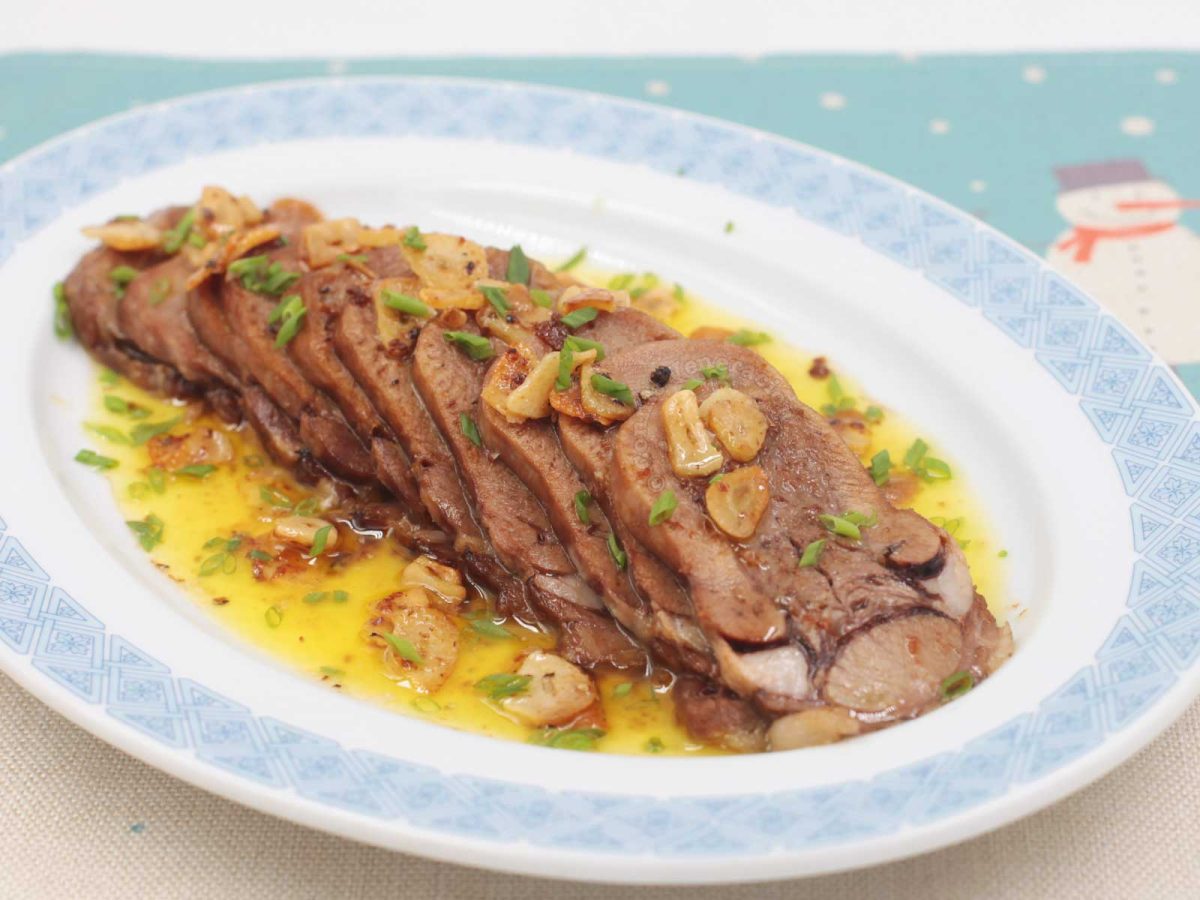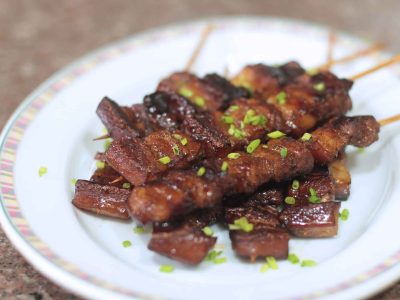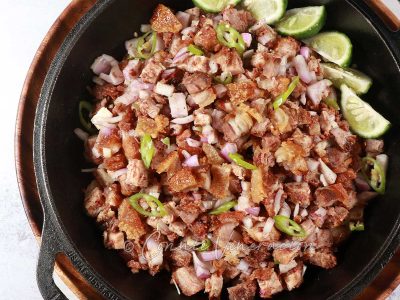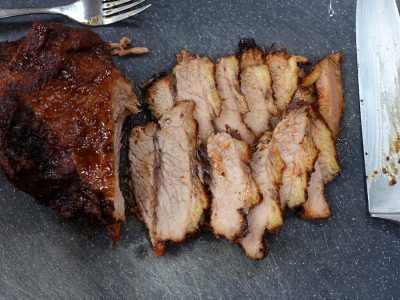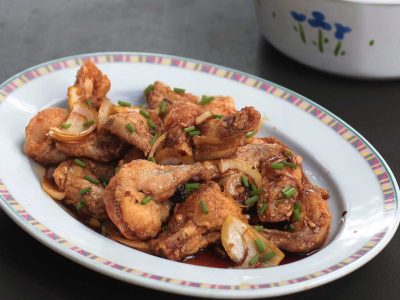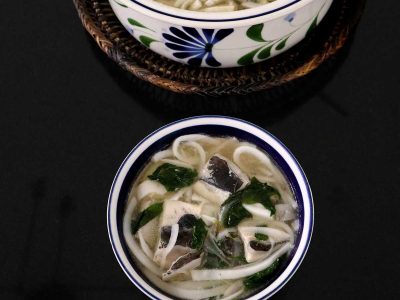People who didn’t grow up eating beef tongue rarely understand why it’s so good. Some balk at the spongy texture; others are put off by the strong smell. Learning to appreciate beef tongue’s unique texture may be a matter of acquired taste. Minimizing the strong smell is a matter of proper preparation.
Preparing beef tongue for cooking begins with removing the sliminess off the skin. Rubbing with rock salt repeatedly is essential. Getting rid of much of the strong smell is not hard. Simply parboil the beef tongue in water with vinegar stirred in. With both steps completed, the beef tongue can be cooked as though it were just another slab of beef.
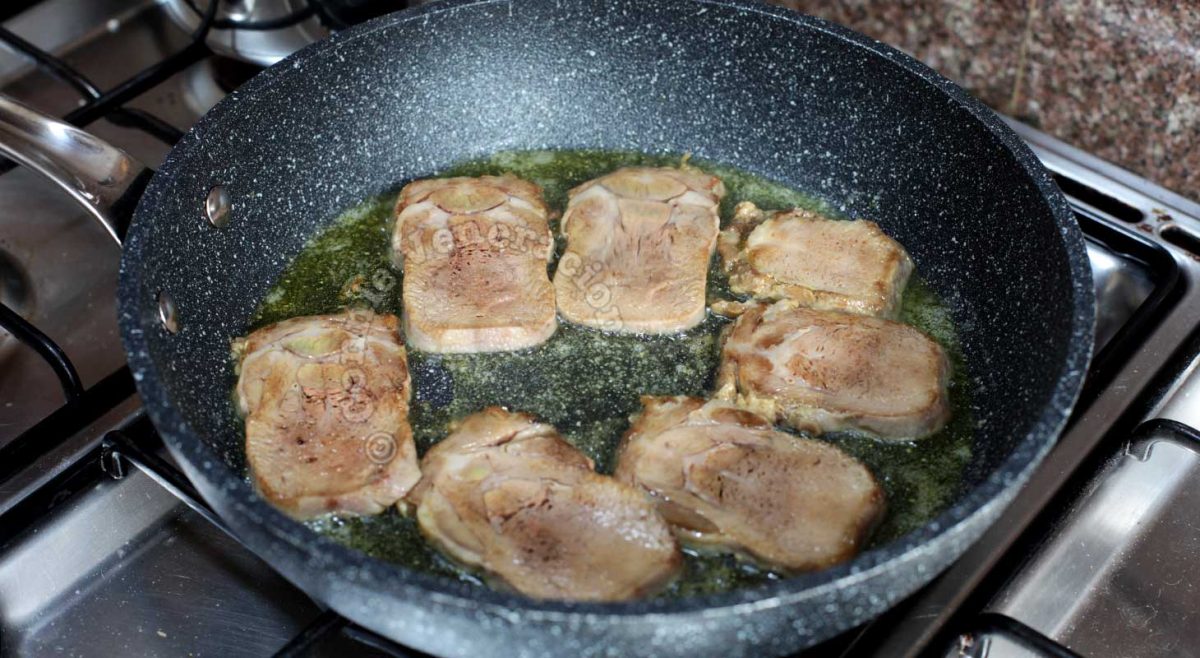
In this recipe, the beef tongue slices are browned in butter both for texture and flavor. Newly cooked beef tongue is too soft to be sliced neatly without the meat falling apart. It’s a better idea that after simmering the beef tongue to tenderness, it is cooled and then chilled to firm up the meat. That makes slicing and browning easier.
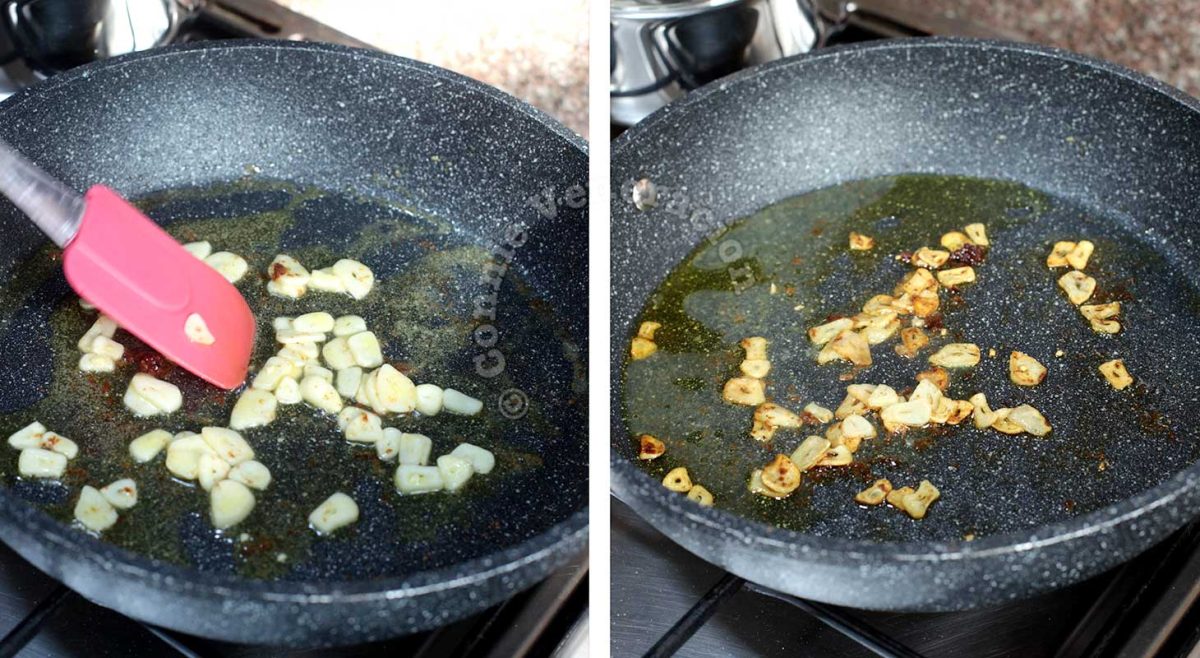
The sauce that goes with the butter-browned beef tongue is really a simple one. It’s garlic browned in butter to which wine is poured and reduced. The reduction concentrates the flavors and prevents the sauce from becoming too thin.
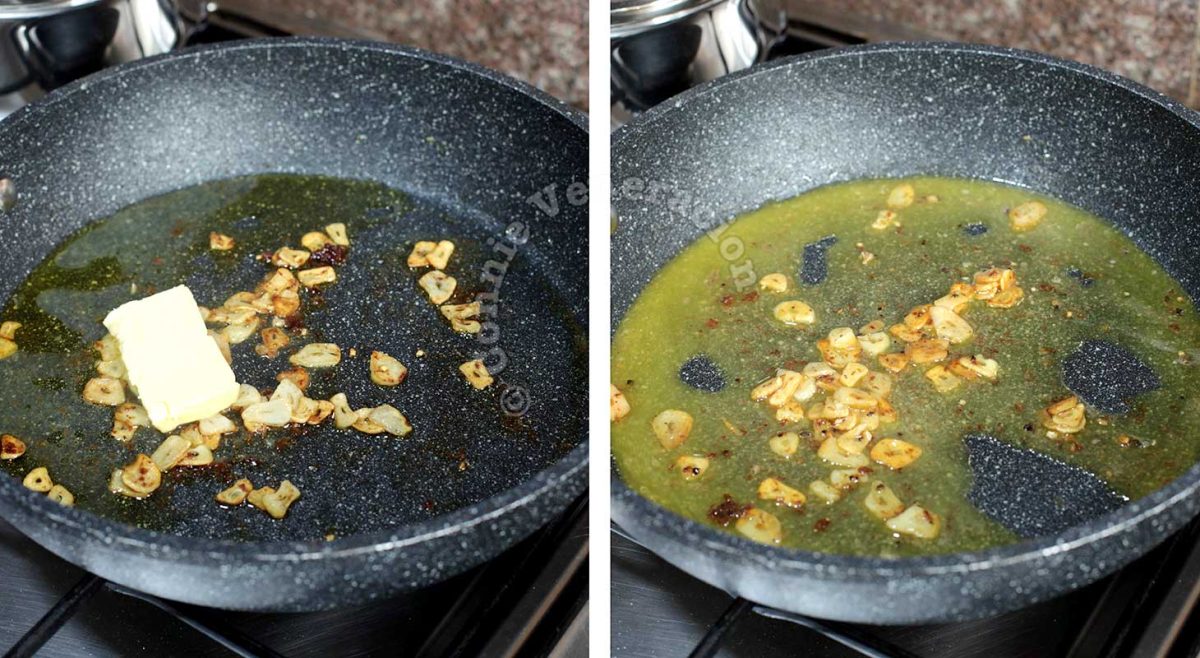
Butter is added after the wine has reduced. With the heat turned off, lemon juice is stirred in. A simple seasoning of salt and pepper is enough to create flavor balance. The sauce and all that delicious garlic are spooned over the butter-browned beef tongue slices and the dish is ready to serve.
Lengua al ajillo (Spanish-style beef tongue with garlic)
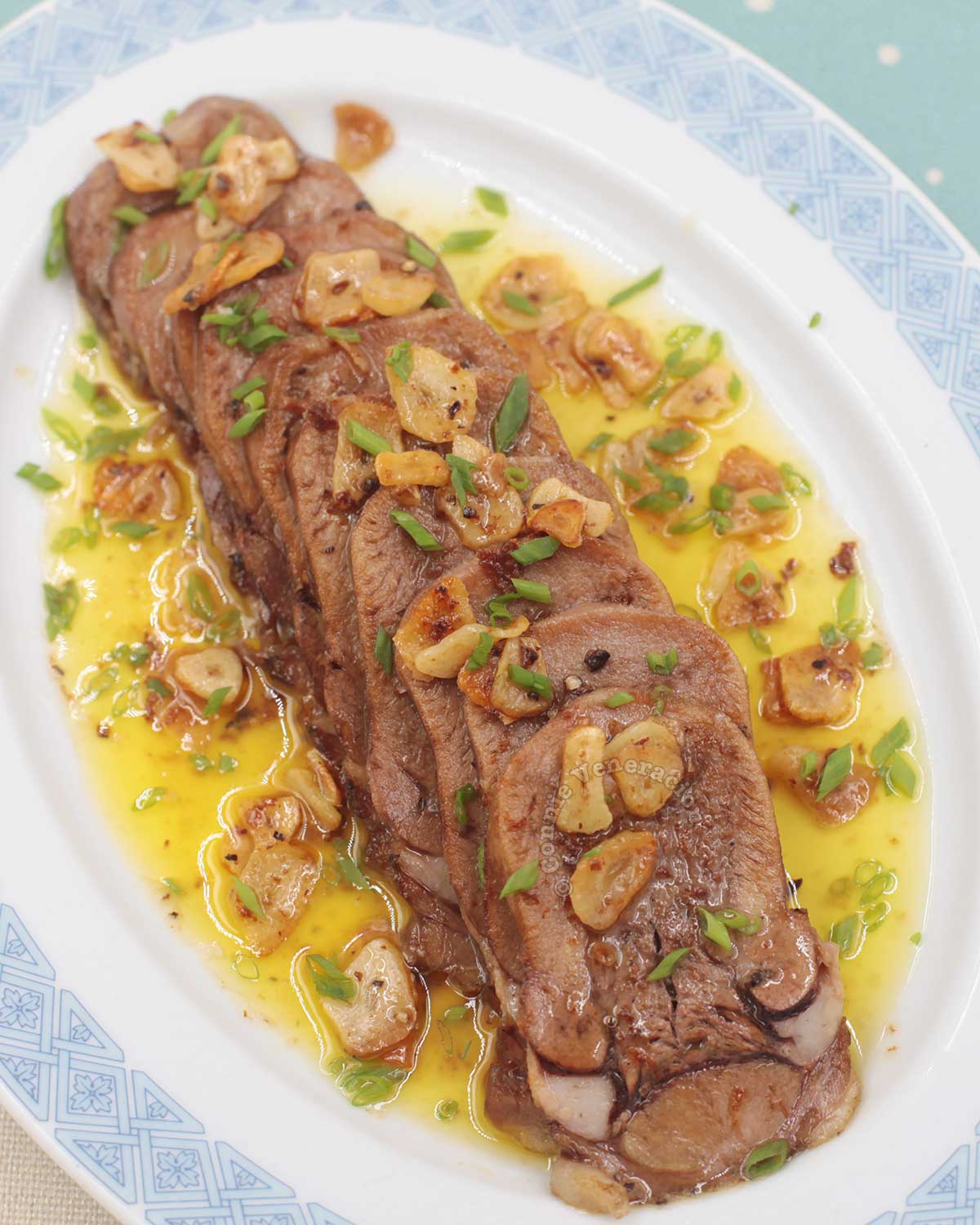
Ingredients
- 1 kilogram beef tongue
- rock salt
- 3 tablespoons vinegar
- ½ teaspoon peppercorns
- 2 bay leaves
- 125 grams butter
- 6 cloves garlic peeled and thinly sliced
- ¼ cup sweet white wine
- 2 tablespoons lemon juice
- ground pepper to taste
- sliced scallions to garnish
Instructions
- Rinse the beef tongue, rub all over with plenty of rock salt then rinse again.
- Boil about ten cups of water in a pot and add the vinegar (don't worry, you won't taste the vinegar in the cooked dish).
- Plunge the beef tongue in the boiling water and leave until the water boils again. Count ten minutes then drain and rinse the beef tongue.
- Place the beef tongue in a clean pot, cover with clean water, add two tablespoons rock salt, peppercorns and bay leaves, and bring to the boil.
- Cover the pot, set the heat to low and simmer for four to six hours (see notes after the recipe).
- Scoop out the beef tongue, cool, wrap in cling film and chill overnight (this makes slicing easier and neater).
- Take the beef tongue out of the fridge, unwrap and peel off the skin (if the tongue is cooked sufficiently, it will easily come off).
- Cut the beef tongue into slices about a quarter of an inch thick.
- Melt two tablespoons of butter in a frying pan.
- Lightly brown the beef tongue slices in the butter. Flip them over to brown the opposite side.
- Arrange the beef tongue on a serving plate.
- Add another third of the butter to the pan. Throw in the garlic slices and cook over medium-low heat, scraping the bottom of the pan, until lightly browned.
- Turn up the heat to high and pour in the wine. Boil, uncovered, until reduced by half.
- Turn down the heat and add the remaining butter. Swirl the pan around to melt.
- Off the heat, stir in the lemon juice. Season with salt and pepper. Stir. Taste. Add more salt, pepper or lemon juice to suit your preference.
- Spoon the sauce over the beef tongue. Spread the garlic on top.
- Garnish with sliced scallions and serve your lengua al ajillo.

